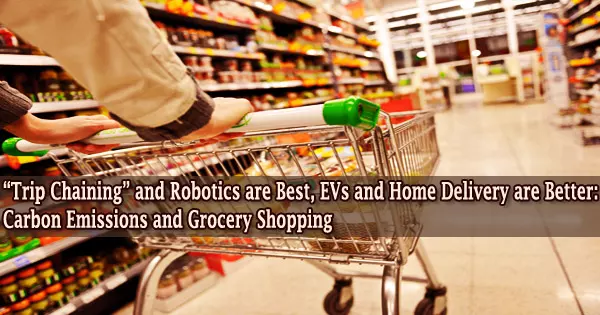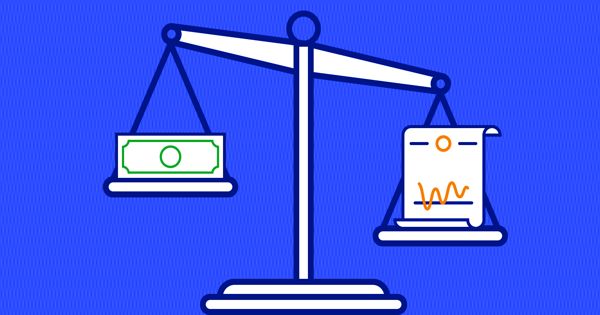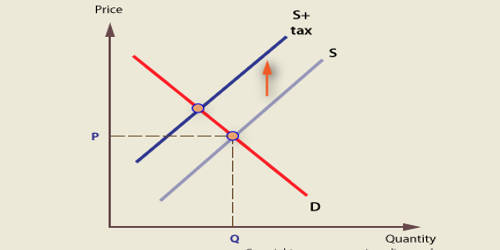The COVID-19 epidemic altered the way food stores operate, with internet sales in the United States increasing by more than 50% between 2019 and 2020.
Grocers evolved to meet rising e-commerce demand as customers looked for convenient and safe ways to buy necessities. Grocers were able to fill pickup orders more rapidly, sometimes within an hour of placing the order, thanks to small, automated warehouses called micro-fulfillment facilities that were sometimes housed inside of already-existing stores.
Meanwhile, continuous developments in robotics, drones, and autonomous vehicles indicate that new consumer options will soon be available.
So, how will all these changes affect the amount of climate-altering greenhouse gases generated by grocery shopping?
Which alternatives produce the most and the least heat-trapping emissions, and what can consumers do to minimize their carbon footprint?
Researchers from the University of Michigan and Ford Motor Company projected emissions for a single 36-item supermarket basket delivered to the consumer via a variety of conventional and online channels to find out.
According to the study, which was published online on August 5, 2022, in the journal Environmental Science & Technology, the in-store shopping scenario with the customer driving an internal combustion pickup truck created the maximum emissions (measured in kilograms of carbon dioxide equivalents).
According to the study, overall greenhouse gas emissions decreased by 39% to 51% when shoppers switched to an electric sedan, SUV, or pickup instead of an equivalent-style internal-combustion vehicle for in-store shopping.
This research lays the groundwork for understanding the impact of e-commerce on greenhouse gas emissions produced by the grocery supply chain. We also emphasize the important role that consumers can serve in reducing emissions through the use of trip chaining and by making carefully planned grocery orders.
Greg Keoleian
Other findings include:
- The relevance of “last-mile” transportation emissions, which relate to the final stage of the delivery process, was reflected in the fact that all home delivery choices had lower emissions than internal-combustion vehicle-powered in-store shopping.
- The drone offered the least polluting route to deliver a single item to clients who reside close to a retailer with a micro-fulfillment center. Several businesses are experimenting with drone delivery of groceries, including Kroger and Walmart.
- Home delivery by a suitcase-sized “sidewalk robot” worked best for the entire 36-item basket. These autonomous vehicles, which have four or six wheels and a delivery range of two miles, are being tested in American, Chinese, and European cities but are not yet widely accessible.
- Curbside pickup using an EV vehicle for customers who reside beyond the delivery zone reduced emissions. Additional savings were made by using a grocery store with a micro-fulfillment center and trip chaining, which involves combining one errand with another.
“This research lays the groundwork for understanding the impact of e-commerce on greenhouse gas emissions produced by the grocery supply chain,” said study senior author Greg Keoleian, director of the Center for Sustainable Systems at U-M’s School for Environment and Sustainability.
“We also emphasize the important role that consumers can serve in reducing emissions through the use of trip chaining and by making carefully planned grocery orders.”
Nicholas Kemp, a former master’s student at the School for Environment and Sustainability, is the study’s first author. Several researchers from the Ford Research and Innovation Center in Dearborn were also co-authors.
With an internal-combustion SUV, in-store shopping was the “base case” for the study. Customers who ordered online and switched to an electric vehicle saw emissions drop by 18% to 42%; those who shopped at stores with a micro-fulfillment center saw reductions of 16% to 54%; and those who used food delivery services saw drops of 22% to 65%.
The study concluded that trip chaining and shopping frequency were significant considerations for households. Comparative to the default scenario, trip chaining lowered emissions by nearly half while halving shopping frequency reduced emissions by 44%.
While some supermarkets, like Kroger, use enormous, automated warehouses known as fulfillment centers, others, like Whole Foods, Meijer, and Albertsons, have made investments in smaller fulfillment facilities.
A hub-and-spoke distribution scheme can use MFCs as its central node. They frequently provide services for several stores, including the one where they are located.
Up to 80% of an online grocery order is frequently filled by in-store MFCs, with the remaining 20% being filled by workers choosing things off the shelves. Currently, curbside pickup requests placed online are mostly filled via MFCs.
The main sources of greenhouse gas emissions related to grocery store operations are the HVAC (heating, ventilation, and air conditioning) system, lighting, and refrigeration. According to the study, in-store MFCs can lower those emissions by up to 67% since they are far more effective than traditional retailers at fulfilling online orders.
In order to guide the decarbonization of the food system as part of global efforts to meet the Intergovernmental Panel on Climate Change emissions-reduction targets, the authors claim that the emission-reduction opportunities found in their study can be combined with other strategies, such as dietary changes and reductions in food waste.
In addition to Keoleian and Kemp, the study’s authors are former School for Environment and Sustainability master’s student Luyao Li and Ford researchers Hyung Chul Kim, Timothy Wallington and Robert De Kleine. The research was supported by the Ford-University of Michigan Alliance Program and the Ford University Research Program.
















